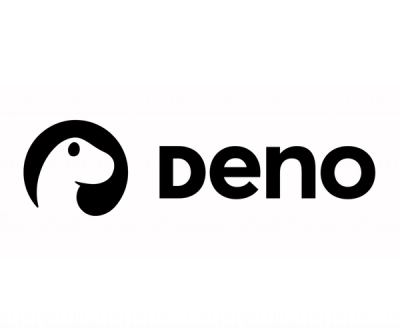
Security News
Open Source CAI Framework Handles Pen Testing Tasks up to 3,600× Faster Than Humans
CAI is a new open source AI framework that automates penetration testing tasks like scanning and exploitation up to 3,600× faster than humans.
serverless-dynamodb-local
Advanced tools
npm install --save serverless-dynamodb-local
Then in serverless.yml add following entry to the plugins array: serverless-dynamodb-local
plugins:
- serverless-dynamodb-local
Install DynamoDB Local
sls dynamodb install
Start DynamoDB Local (DynamoDB will process incoming requests until you stop it. To stop DynamoDB, type Ctrl+C in the command prompt window). Make sure above command is executed before this.
sls dynamodb start
Create/Execute DynamoDB (Migrations)
Create a new migration file (Default directory path /dynamodb). Make sure DynamoDB Local is started in another shell.
sls dynamodb create -n <filename>
Execute a single migration. Make sure DynamoDB Local is started in another shell.
sls dynamodb execute -n <filename>
Execute all migrations on the remote dynamodb.
sls dynamodb executeAll
Note: Read the detailed section for more information on advanced options and configurations. Open a browser and go to the url http://localhost:8000/shell to access the web shell for dynamodb local.
To remove the installed dynamodb local, run:
sls dynamodb remove
Note: This is useful if the sls dynamodb install failed in between to completely remove and install a new copy of DynamoDB local.
All CLI options are optional:
--port -p Port to listen on. Default: 8000
--cors -c Enable CORS support (cross-origin resource sharing) for JavaScript. You must provide a comma-separated "allow" list of specific domains. The default setting for -cors is an asterisk (*), which allows public access.
--inMemory -i DynamoDB; will run in memory, instead of using a database file. When you stop DynamoDB;, none of the data will be saved. Note that you cannot specify both -dbPath and -inMemory at once.
--dbPath -d The directory where DynamoDB will write its database file. If you do not specify this option, the file will be written to the current directory. Note that you cannot specify both -dbPath and -inMemory at once. For the path, current working directory is <projectroot>/node_modules/serverless-dynamodb-local/dynamob. For example to create <projectroot>/node_modules/serverless-dynamodb-local/dynamob/<mypath> you should specify -d <mypath>/ or --dbPath <mypath>/ with a forwardslash at the end.
--sharedDb -h DynamoDB will use a single database file, instead of using separate files for each credential and region. If you specify -sharedDb, all DynamoDB clients will interact with the same set of tables regardless of their region and credential configuration.
--delayTransientStatuses -t Causes DynamoDB to introduce delays for certain operations. DynamoDB can perform some tasks almost instantaneously, such as create/update/delete operations on tables and indexes; however, the actual DynamoDB service requires more time for these tasks. Setting this parameter helps DynamoDB simulate the behavior of the Amazon DynamoDB web service more closely. (Currently, this parameter introduces delays only for global secondary indexes that are in either CREATING or DELETING status.)
--optimizeDbBeforeStartup -o Optimizes the underlying database tables before starting up DynamoDB on your computer. You must also specify -dbPath when you use this parameter.
--migration -m After starting dynamodb local, run dynamodb migrations.
All the above options can be added to serverless.yml to set default configuration: e.g.
custom:
dynamodb:
start:
port: 8000
inMemory: true
migration: true
migration:
dir: ./offline/migrations
In serverless.yml add following to customize DynamoDB Migrations file directory and table prefixes/suffixes
custom:
dynamodb:
migration:
dir: dynamodbMigrations
table_prefix: prefix
table_suffix": suffix
In serverless.yml add following to execute all the migration upon DynamoDB Local Start
custom:
dynamodb:
start:
migration: true
{
"Table": {
"TableName": "TableName",
"KeySchema": [{
"AttributeName": "attr_1",
"KeyType": "HASH"
}, {
"AttributeName": "attr_2",
"KeyType": "RANGE"
}],
"AttributeDefinitions": [{
"AttributeName": "attr_1",
"AttributeType": "S"
}, {
"AttributeName": "attr_2",
"AttributeType": "S"
}],
"LocalSecondaryIndexes": [{
"IndexName": "local_index_1",
"KeySchema": [{
"AttributeName": "attr_1",
"KeyType": "HASH"
}, {
"AttributeName": "attr_2",
"KeyType": "RANGE"
}],
"Projection": {
"NonKeyAttributes": ["attr_1", "attr_2"],
"ProjectionType": "INCLUDE"
}
}],
"GlobalSecondaryIndexes": [{
"IndexName": "global_index_1",
"KeySchema": [{
"AttributeName": "attr_1",
"KeyType": "HASH"
}, {
"AttributeName": "attr_2",
"KeyType": "RANGE"
}],
"Projection": {
"NonKeyAttributes": ["attr_1", "attr_2"],
"ProjectionType": "INCLUDE"
},
"ProvisionedThroughput": {
"ReadCapacityUnits": 1,
"WriteCapacityUnits": 1
}
}],
"ProvisionedThroughput": {
"ReadCapacityUnits": 1,
"WriteCapacityUnits": 1
}
},
"Seeds": [{
"attr_1": "attr_1_value",
"attr_2": "attr_2_value"
}]
}
Before modifying the migration template, refer the (Dynamodb Client SDK): http://docs.aws.amazon.com/AWSJavaScriptSDK/latest/AWS/DynamoDB.html#createTable-property and (Dynamodb Document Client SDK): http://docs.aws.amazon.com/AWSJavaScriptSDK/latest/AWS/DynamoDB/DocumentClient.html#put-property links.
You need to add the following parameters to the AWS NODE SDK dynamodb constructor
e.g. for dynamodb document client sdk
var AWS = require('aws-sdk');
new AWS.DynamoDB.DocumentClient({
region: 'localhost',
endpoint: 'http://localhost:8000'
})
e.g. for dynamodb document client sdk
new AWS.DynamoDB({
region: 'localhost',
endpoint: 'http://localhost:8000'
})
When using this plugin with serverless-offline, it is difficult to use above syntax since the code should use DynamoDB Local for development, and use DynamoDB Online after provisioning in AWS. Therefore we suggest you to use serverless-dynamodb-client plugin in your code.
The serverless dynamodb start command can be triggered automatically when using serverless-offline plugin.
Please note that you still need to install DynamoDB Local first.
Add both plugins to your serverless.yml file:
plugins:
- serverless-dynamodb-local
- serverless-offline
Make sure that serverless-dynamodb-local is above serverless-offline so it will be loaded earlier.
Now your local DynamoDB database will be automatically started before running serverless offline.
FAQs
Serverless dynamodb local plugin
The npm package serverless-dynamodb-local receives a total of 18,699 weekly downloads. As such, serverless-dynamodb-local popularity was classified as popular.
We found that serverless-dynamodb-local demonstrated a not healthy version release cadence and project activity because the last version was released a year ago. It has 4 open source maintainers collaborating on the project.
Did you know?

Socket for GitHub automatically highlights issues in each pull request and monitors the health of all your open source dependencies. Discover the contents of your packages and block harmful activity before you install or update your dependencies.

Security News
CAI is a new open source AI framework that automates penetration testing tasks like scanning and exploitation up to 3,600× faster than humans.

Security News
Deno 2.4 brings back bundling, improves dependency updates and telemetry, and makes the runtime more practical for real-world JavaScript projects.

Security News
CVEForecast.org uses machine learning to project a record-breaking surge in vulnerability disclosures in 2025.